The ocean is facing a crisis because of global warming. As the ocean absorbs more heat and carbon dioxide from the atmosphere, its water gets warmer and more acidic, harming marine life and threatening biodiversity. Melting sea ice and rising sea levels are also looming risks, especially to small, low-lying islands like Singapore.
Also, plastic pollution is ever increasing. Plastic waste ends up in the ocean, trapping marine creatures or being ingested by them.
How can Singapore contribute more to ocean conservation and join the global conversation?
Enter the Singapore Oceanarium.
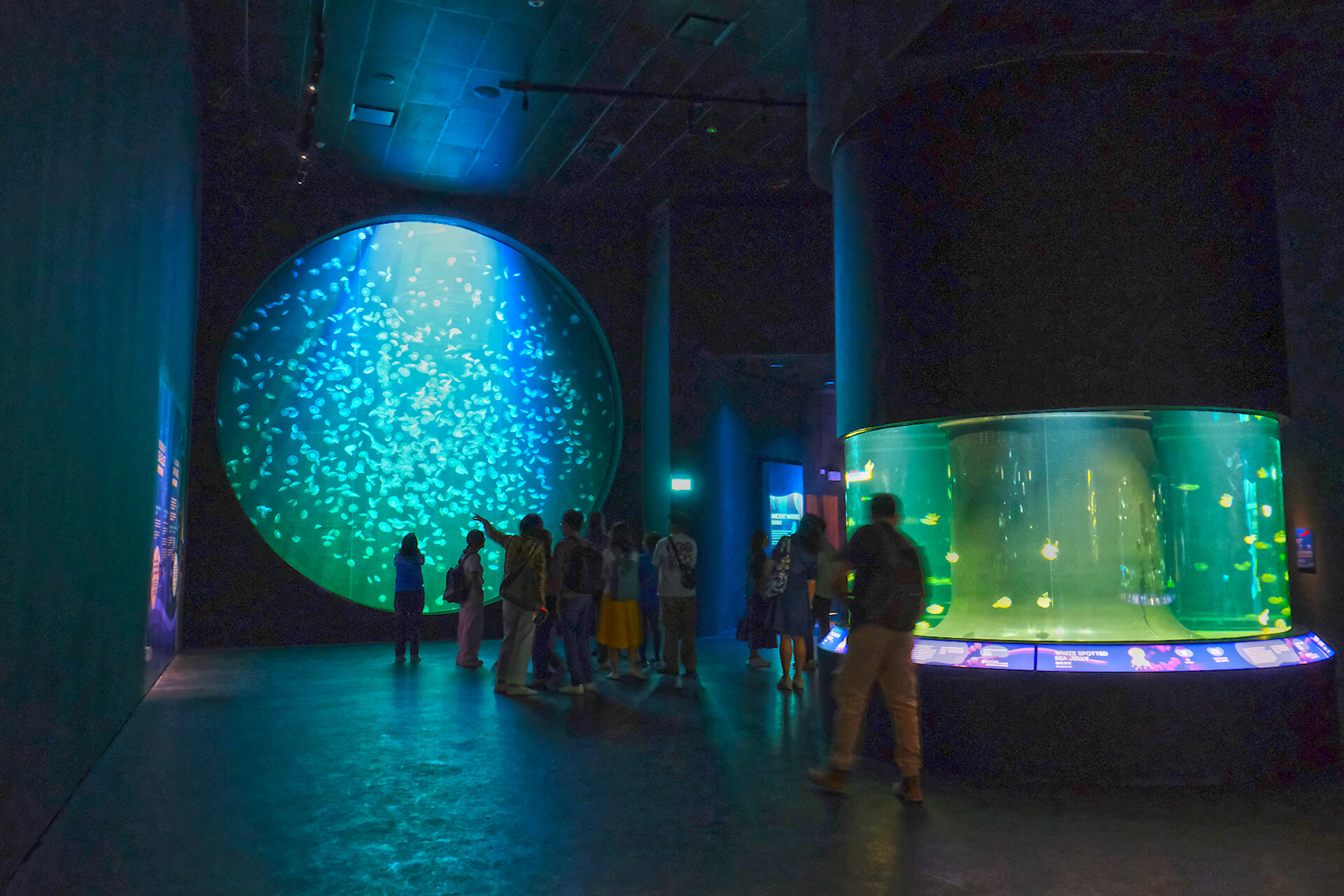
The Singapore Oceanarium – A Champion for the Ocean
The oceanarium at Resorts World Sentosa is not just a destination for tourists and Singaporeans. It also aims to be a leading marine institute championing marine education and sustainability.
It offers 22 thematic zones that explore the ocean’s history, present and future through naturalistic habitats, immersive storytelling and digital technology. At the same time, the oceanarium has a research and learning centre dedicated to marine education and conservation programmes.
As the Singapore Oceanarium’s appointed storyteller, HOL took a story-first approach to its experience and interpretive design. In this article, I will take you through the experience strategy HOL used to help the oceanarium tell stories that convey marine knowledge to its audience, move them to care more about the ocean and motivate them towards ocean stewardship.
Experience Strategy for the Singapore Oceanarium
For every experience we strategise and design, we aim to tell stories that simplify and illuminate hard knowledge and concrete data. Stories put facts and figures in context and are more likely to resonate emotionally with their audience. In other words, stories can move hearts, change minds and motivate actions.
To tell such impactful and memorable stories for the Singapore Oceanarium, we used our proprietary framework, CRM – Communicate, Resonate, Motivate, to develop an experience strategy.
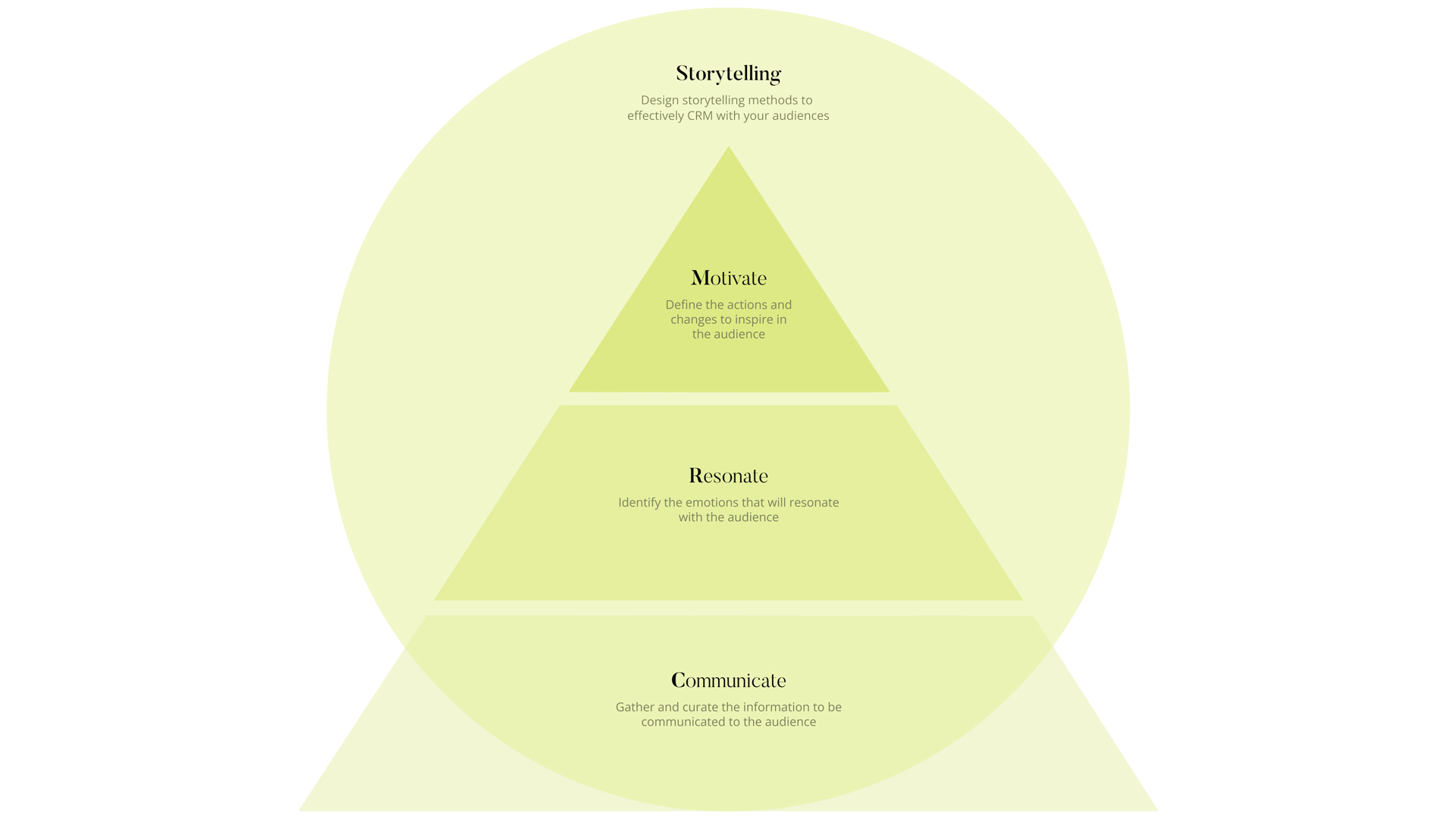
Communicate
We first gathered and curated the information that the Singapore Oceanarium wanted to communicate to its audience, and ensured that the information was accurate to avoid misinformation.
Resonate
Working with the oceanarium, we identified the emotions we wanted the audience to feel during the experience. If the experience resonated emotionally with the audience, they would be more open to the messages, actions and changes in perspectives we wanted to drive.
Motivate
At this stage, we established the actions and changes we wanted to bring about through the experience.
The single most important takeaway
Considering the knowledge, emotions and actions determined in the above steps, we then asked: What is the core message, or the single most important takeaway, for the audience? This became the central idea threading through the oceanarium’s 22 thematic zones.
We recognised that ocean sustainability would be fairly new to most of the audience. Realistically, it would take much more exposure than a single visit to the oceanarium for them to advocate or even remember ocean sustainability. At the same time, we also knew that self-directed actions and changes would be more enduring.
Therefore, we did not dictate the actions or perspectives the audience should take. We simply nudged the audience towards smaller but more sustainable actions and perspective changes that would contribute to the oceanarium’s longer-term goal of nurturing ocean sustainability advocates.
The single most important takeaway for the oceanarium’s audience? To care more about the ocean.
The Singaporean Oceanarium aims to be a leading marine institute championing marine education and sustainability.
Telling Stories of the Ocean
After determining the main takeaway, it was time to decide on the stories and the storytelling methods.
If we were to directly preach to the audience or instruct them on marine conservation or ocean sustainability, the messages might fall flat. Instead, we chose stories from the ocean’s history, beauty and state of vulnerability, and told them through immersive design.
Below are a few highlights from the experience where stories meet immersive storytelling to transport the audience to a place of wonderment, evoking emotional responses from awed admiration and joy to urgency and even compassion.
If the experience resonates with the audience emotionally, they are more inclined to remember the Singapore Oceanarium and care a little more about the ocean. Then naturally, because they care, they are likely to reach the conclusion that they should and can contribute to conservation and sustainability.
1. Ocean Wonders
In Ocean Wonders, thousands of free-floating sea jellies like Moon Jellies, Fried Egg Sea Jellies and Atlantic Sea Nettles in cylindrical tanks mesmerise the audience with their grace and fluidity. Immersive lighting and soundscapes help create the sensation of being underwater and moving alongside the sea jellies. This zone captivates with stories of the ocean’s beauty, leaving its audience in awe.
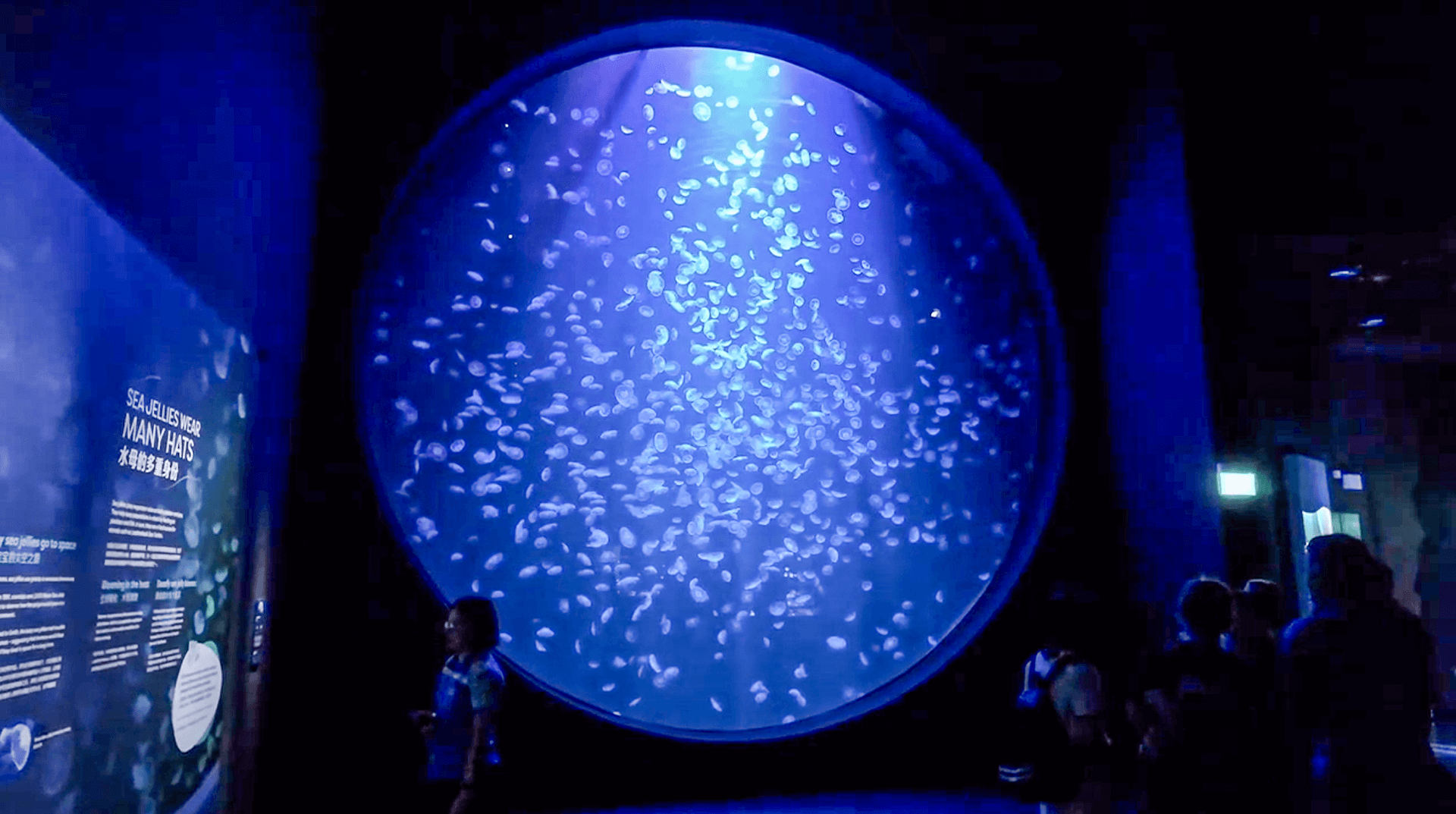
2. Conquering Land
What if you could see extinct animals move and play before your eyes? That would surely be a memorable sight. The thematic zone Conquering Land focuses on the first animals’ transition from water onto land. Beyond simply stating names and facts, the experience combines live habitats containing ancient amphibian species that have existed to this day, like the Axolotls and Poison Dart Frogs, with digital representations of extinct species such as the Eryops and Diplocaulus. This immersive experience recreates the ocean of millions of years ago and lets the audience see the evolutionary story unfolding for themselves.
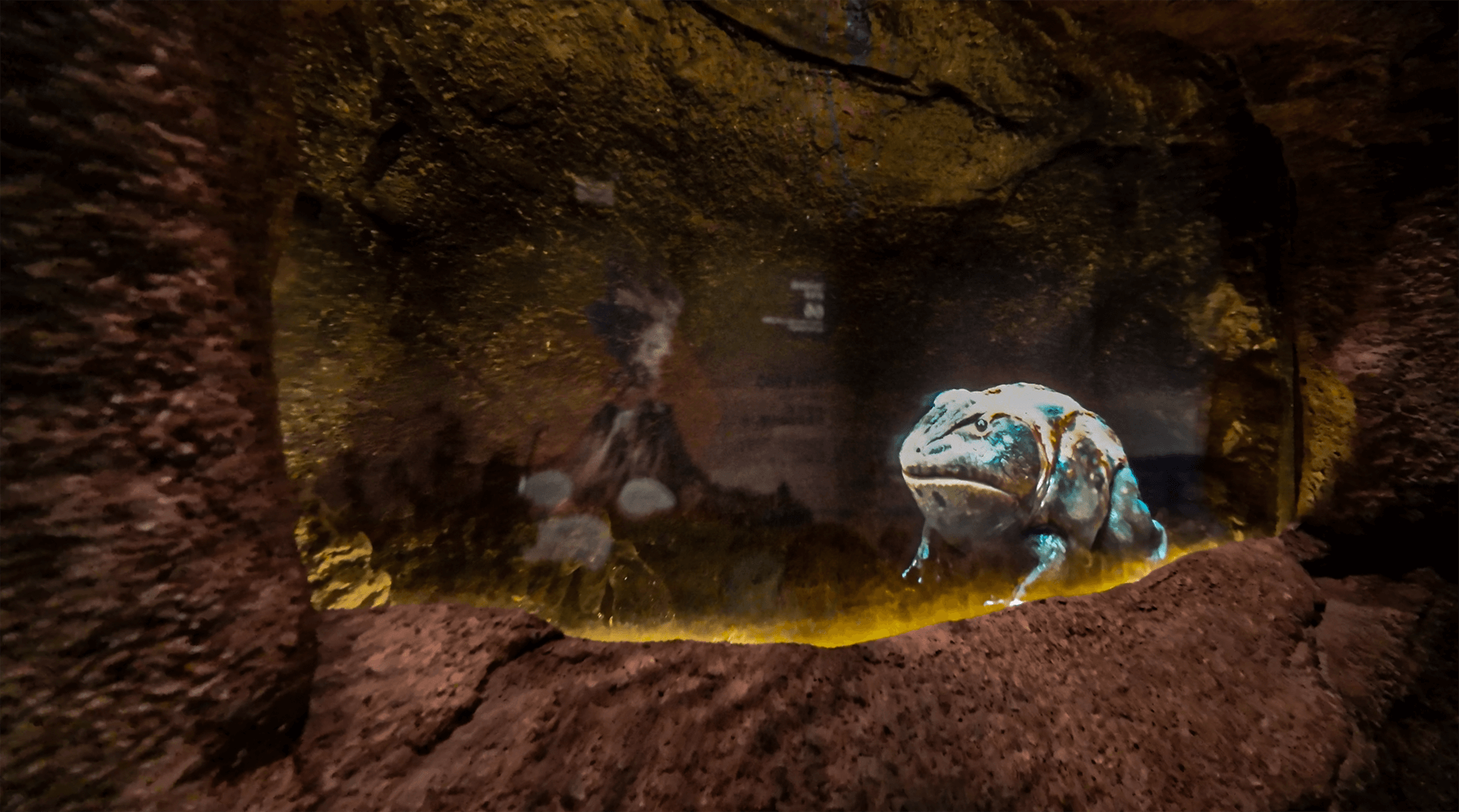
3. Whale Fall and Seamount
The deep sea is a place of mystery, largely unknown to humans, even marine scientists. But in the Whale Fall and Seamount zone, the audience can imagine what it is like in the ocean’s darkest depths. From walking through a massive skeleton of a whale fall, to hearing the rumbles of hydrothermal vents amid towering seamounts, to viewing unique animals like the Japanese Isopod and Australian Ghostshark in live habitats, the audience can discover stories of the yet unknown while marvelling at the unexpected vibrancy and remarkable resilience of deep-sea inhabitants thriving in harsh conditions.
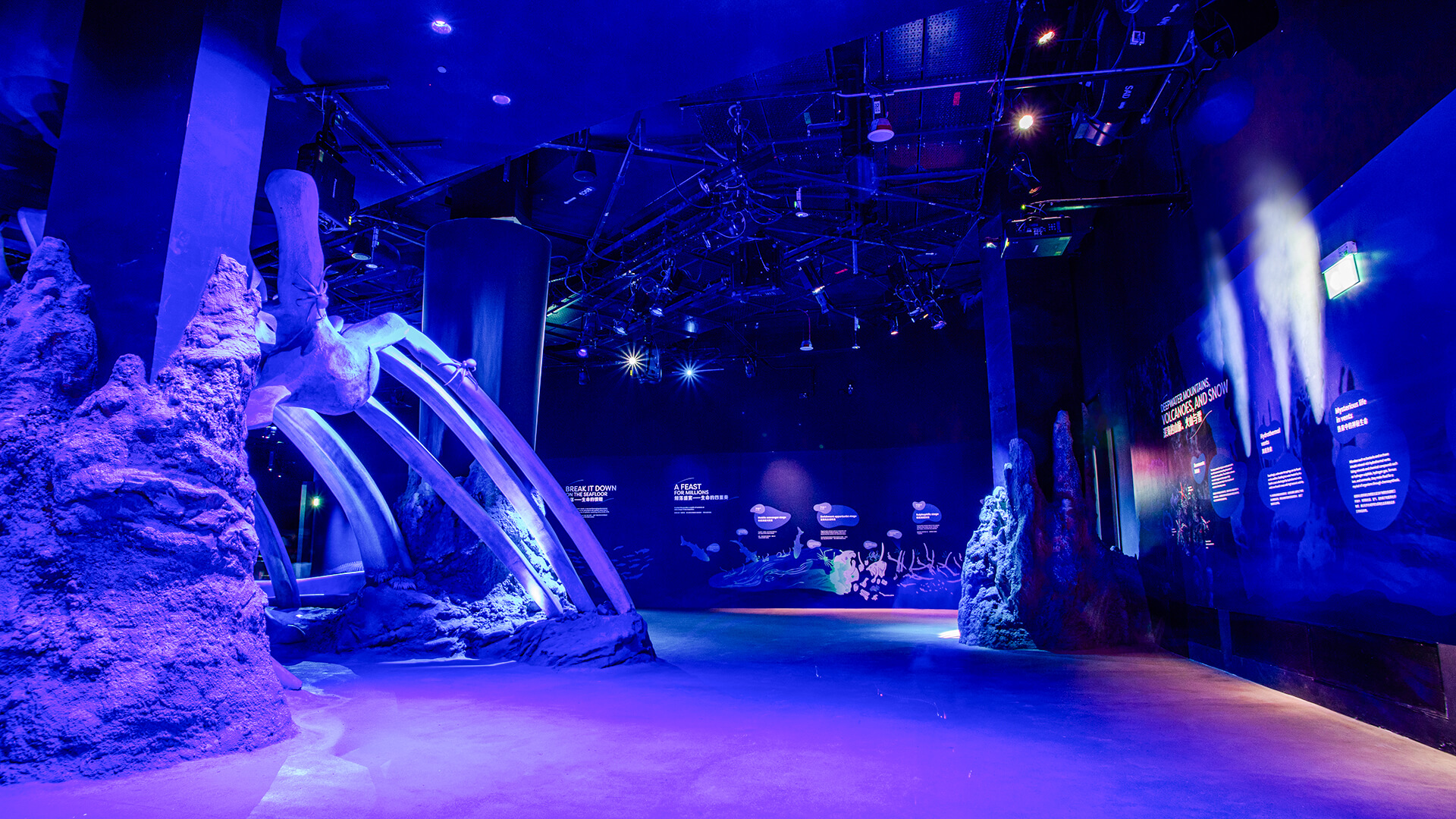
Final Thoughts
Life on Earth began in a drop of water, from which microscopic phytoplankton evolved to support more complex life forms. Similarly, the Singapore Oceanarium’s experience strategy starts with a modest takeaway for its audience – to care more about the ocean.
The takeaway may seem small. But as more people experience and resonate with the stories that come from the ocean, they may just find themselves caring more about the ocean and be open to ocean stewardship. And the oceanarium will gather momentum towards fulfilling its mission as the ocean’s champion.

